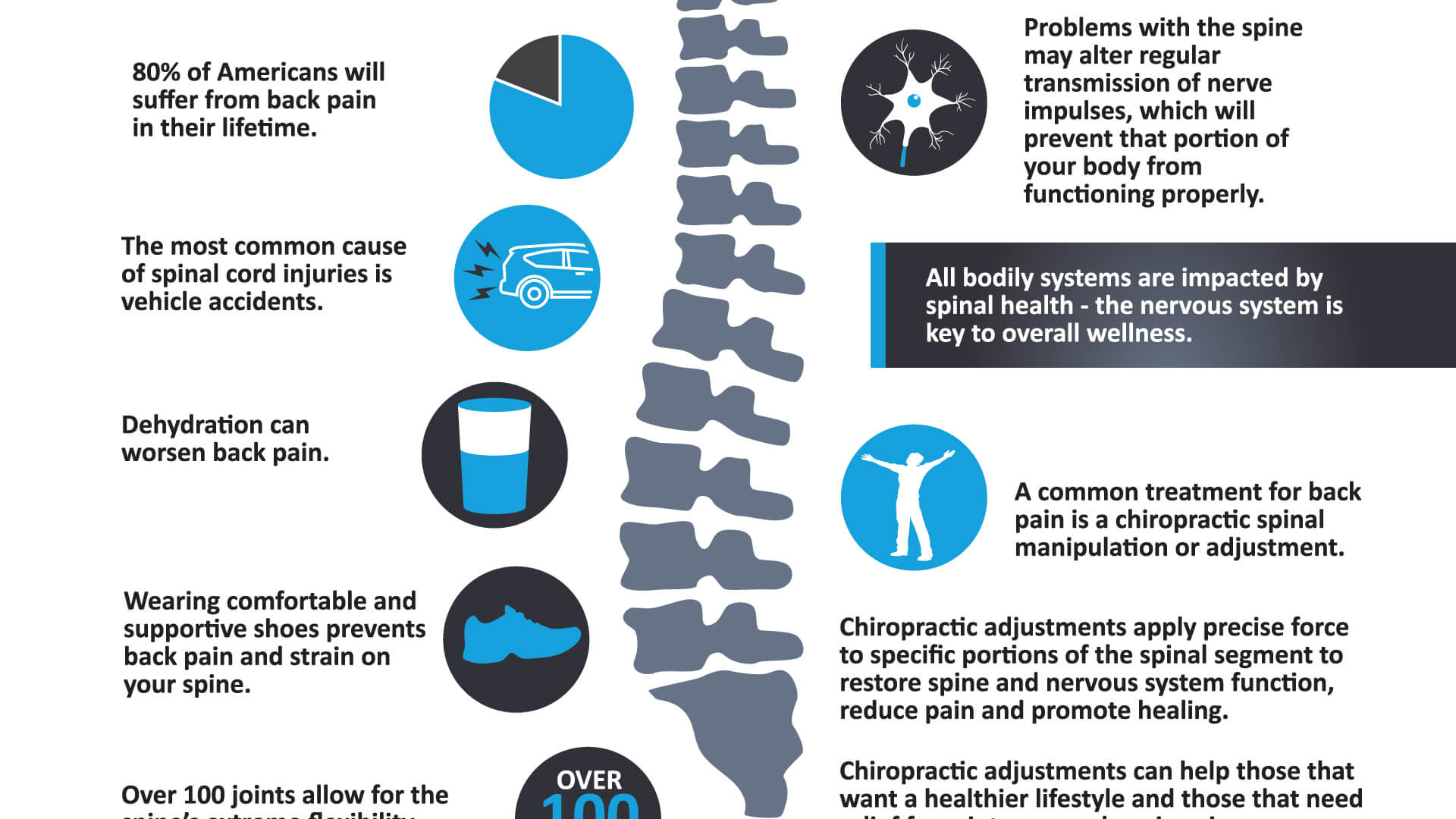The Relationship Between Pose And Neck And Back Pain: Methods For Maintaining Correct Placement During The Day
The Relationship Between Pose And Neck And Back Pain: Methods For Maintaining Correct Placement During The Day
Blog Article
Published By-Bush Patton
Preserving correct pose isn't almost staying up right; it has to do with straightening your body in a way that sustains your back and reduces the danger of back pain. The way you rest, stand, and move throughout the day can substantially impact your back wellness. But how precisely can you guarantee excellent positioning constantly, even during active days filled with numerous activities? Allow' cupping and acupuncture near me into the subtle yet impactful modifications you can make to your everyday routine to maintain your back delighted and healthy and balanced.
Relevance of Correct Position
Appropriate position is essential in maintaining a healthy back and protecting against pain. When you sit or stand with great posture, your spine remains in alignment, minimizing stress on your muscular tissues, tendons, and joints. This placement allows the body to distribute weight equally, protecting against extreme tension on particular locations that can lead to pain and pain. By keeping your back properly lined up, you can additionally enhance your breathing and digestion, as slouching can compress body organs and restrict their functionality.
In addition, preserving great pose can improve your overall appearance and self-esteem. When you stand tall with your shoulders back and head held high, you exhibit confidence and appear more friendly. Good pose can additionally make you feel much more invigorated and sharp, as it advertises correct blood flow and enables your muscles to function effectively.
Integrating appropriate stance right into your day-to-day regimen, whether sitting at a workdesk, walking, or exercising, is vital for avoiding pain in the back and advertising overall wellness. Remember, a small modification in how you hold yourself can make a considerable distinction in how you really feel and operate throughout the day.
Common Postural Mistakes
When it comes to maintaining excellent pose, many individuals unknowingly make typical errors that can contribute to neck and back pain and pain. Among one of the most common errors is slumping over or hunching over while resting or standing. This setting places too much strain on the spine and can bring about muscle mass discrepancies and pain in the future.
Another typical mistake is overarching the lower back, which can squash the natural contour of the spinal column and trigger pain. In addition, crossing legs while sitting might really feel comfortable, yet it can develop an inequality in the hips and hips, leading to postural problems.
Making use of a cushion that's also soft or also strong while sleeping can additionally influence your positioning and add to neck and back pain. Lastly, continuously craning https://codyqlfzt.dm-blog.com/31284481/embark-on-a-journey-with-the-exciting-past-of-chiropractic-medication-unearthing-its-ancient-beginnings-and-modern-developments-that-will-redefine-your-understanding-of-holistic-healing to consider screens or adjusting your placement often can stress the neck and shoulders. Being mindful of these common postural errors can aid you maintain better alignment and decrease the danger of pain in the back.
Tips for Correcting Alignment
To improve your placement and reduce pain in the back, it's essential to focus on making small changes throughout your daily routine. Begin by bearing in mind your posture. When sitting, ensure your feet are flat on the floor, your back is straight, and your shoulders are loosened up. Avoid slouching or leaning to one side. Usage ergonomic chairs or pillows to sustain your lower back.
When standing, disperse your weight equally on both feet, maintain your knees somewhat curved, and embed your pelvis. Involve your core muscles to support your back. Take breaks to extend and walk around if you have a less active task. Integrate exercises that reinforce your core and back muscular tissues, such as slabs or bridges.
While sleeping, utilize a pillow that sustains the all-natural curve of your neck to preserve proper back placement. Prevent sleeping on your belly, as it can stress your neck and back. By being mindful of these ideas and making small changes, you can gradually correct your positioning and reduce pain in the back.
Final thought
Remember, maintaining good posture is vital to preventing back pain and promoting spinal wellness. By being mindful of your placement, distributing weight equally, and engaging your core muscular tissues, you can decrease pressure on your back and lessen the threat of pain and injury. Incorporate ergonomic support, take regular breaks to stretch, and enhance your core and back muscles to maintain appropriate alignment throughout the day. Your back will certainly thank you for it!
